In Montreal, as in many cities across Canada, the surge in housing prices is reshaping our relationship to living spaces. The search for affordable apartments often reveals a harsh truth: these rare, affordable units are seldom maintained out of goodwill. More often than not, they are neglected by their landlords. Cracks in the walls, doors that don’t close properly, and leaky faucets become familiar parts of everyday life. This project explores the unintentional permeability between the interior and exterior, not only in the artist’s apartment but also in many other affordable dwellings in Montreal.
Straddling the line between photojournalism and imagination, the artist documents the various porosities of their living space, from a crack in the ceiling to mold found in the bathroom. These photographs serve as the starting point for a reflection that shifts between disaster scenarios, playful exaggerations, and mundane but telling interventions. “Thus, imperceptibly, we move from the banality of everyday things to the novelistic intervention... and suddenly, events take on meaning” (Aragon, 1980).
The artist takes these photographs and imports them into 3D software, recreating certain elements from the scenes and texturing them with the original images. Using the possibilities of CGI and simulation, imagined elements are layered onto the photographs, resulting in works that range from large-format prints to short videos and real-time simulations. Additionally, in a gesture where improvisation meets technology, an old bedspread is repurposed to conceal motors and robotic devices, adding a performative dimension to the project.
Dans le contexte montréalais, comme dans plusieurs villes canadiennes, l'explosion des prix du logement transforme profondément notre rapport à l'habitation. Cette course aux appartements abordables expose une réalité moins reluisante : ces logements accessibles le sont souvent par défaut, délaissés par leurs propriétaires. Les fissures dans les murs, les portes qui ferment mal et les robinets qui fuient deviennent alors des éléments familiers du quotidien.
Ce projet explore les espaces involontairement perméables entre l'intérieur et l'extérieur, caractéristiques non seulement de l'appartement de l'artiste, mais aussi de nombreux logements encore abordables à Montréal. À mi-chemin entre le photoreportage et l'imaginaire, l'artiste documente les failles et porosités de son espace de vie : une fissure au plafond, une moisissure dans la salle de bain. Ces photographies deviennent le point de départ d'une réflexion qui oscille entre scénarios catastrophes, exagérations ludiques et interventions banales mais révélatrices. « C’est ainsi qu’insensiblement on passe de la banalité des choses quotidiennes à l’intervention romanesque... et tout d’un coup les événements prennent un sens » (Aragon, 1980).
L’artiste utilise ces images pour créer des reconstitutions en 3D, recréant certains éléments de son environnement et les texturant avec les photographies elles-mêmes. Grâce aux possibilités offertes par le CGI et la simulation, des éléments imaginaires sont superposés aux images d'origine, générant des compositions qui varient entre impressions grand format, courtes vidéos et simulations en temps réel. De plus, dans une démarche où l’improvisation rencontre la technologie, une ancienne couette de lit est utilisée pour masquer des moteurs et dispositifs robotiques, intégrant ainsi une dimension performative au projet.
Aragon, L. (1980). Le mentir-vrai. Gallimard, Paris, p.27
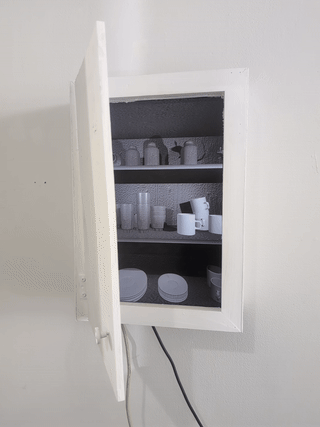
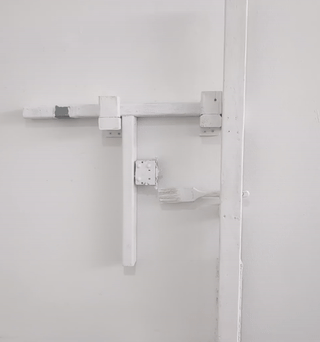
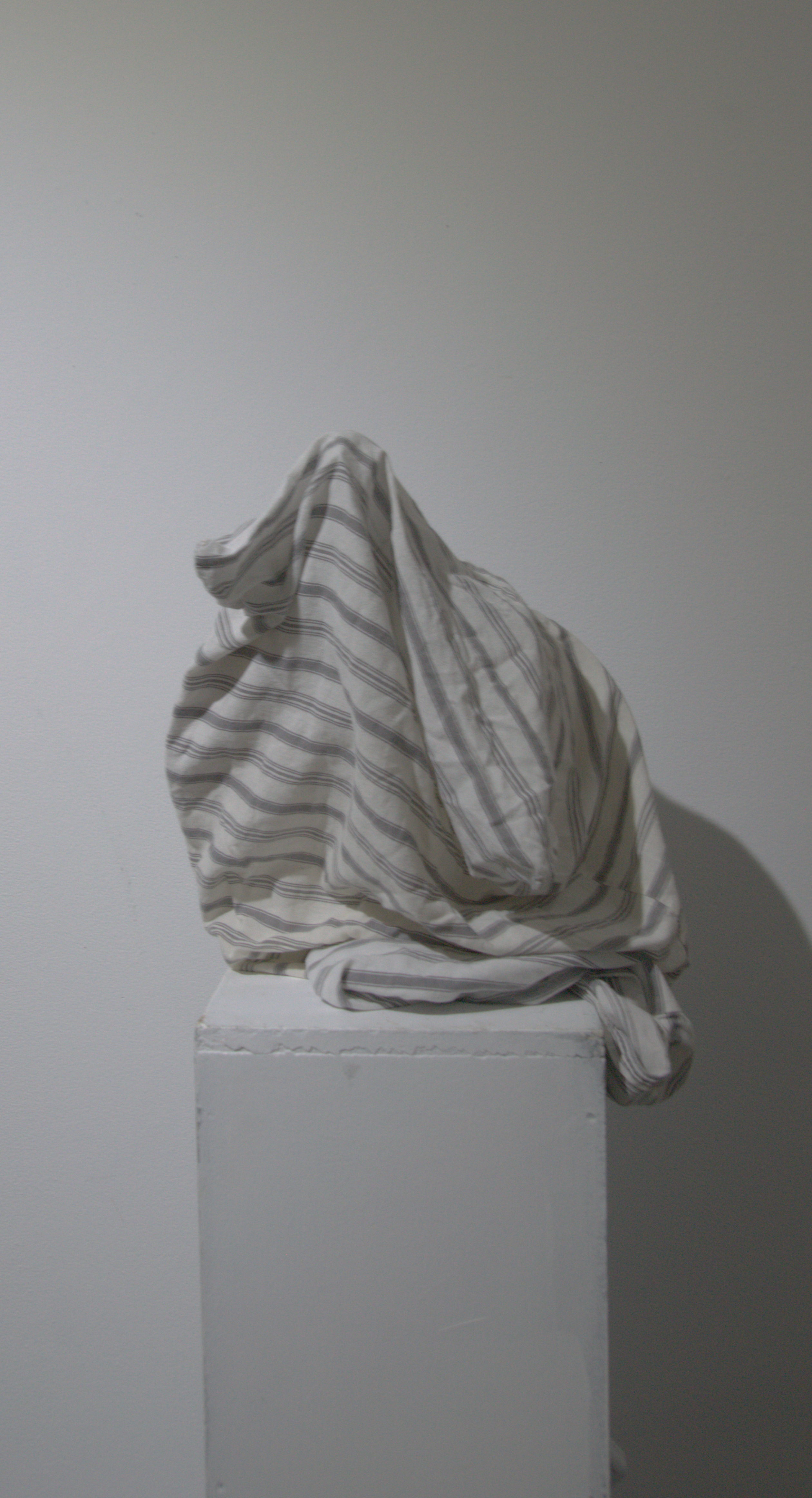
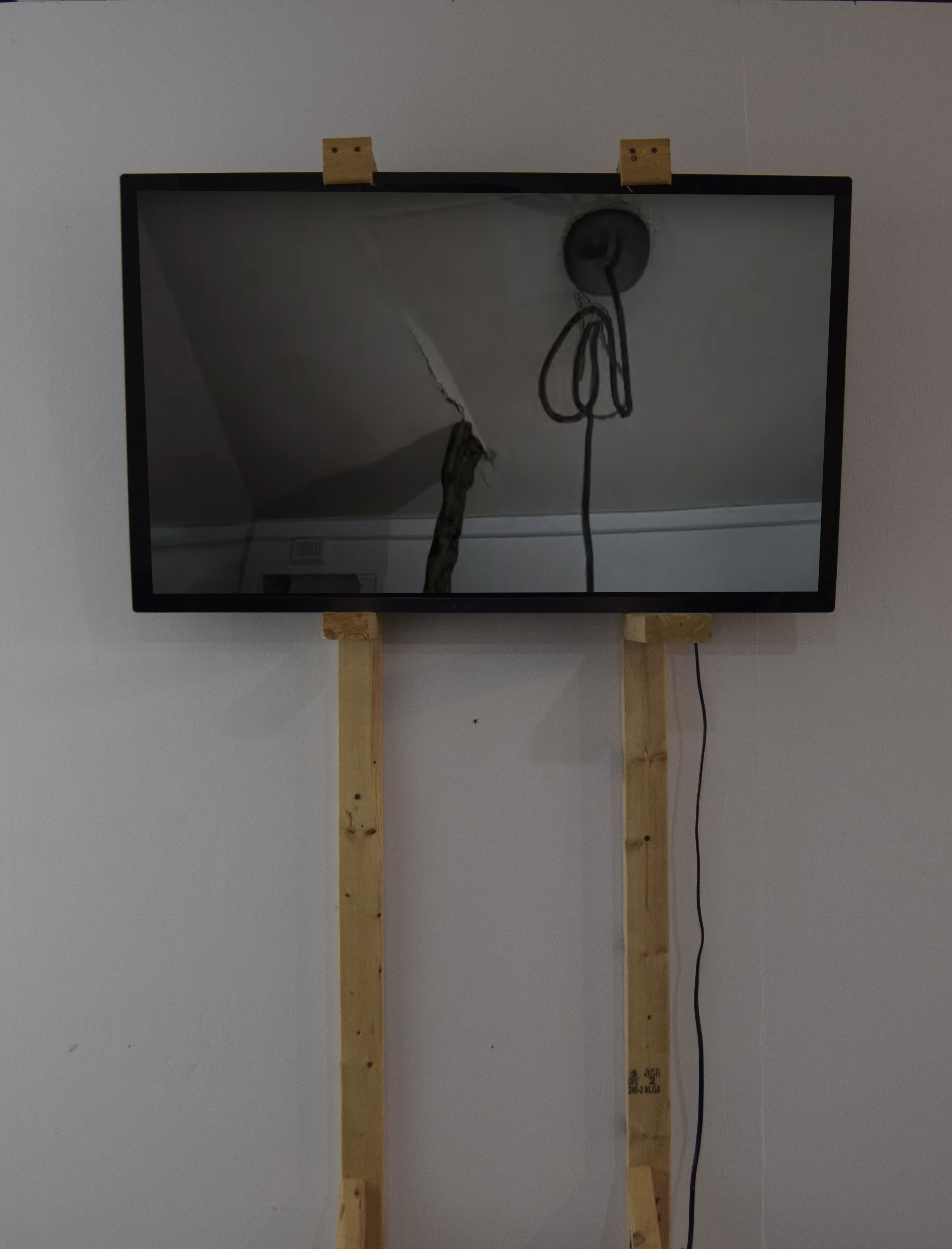
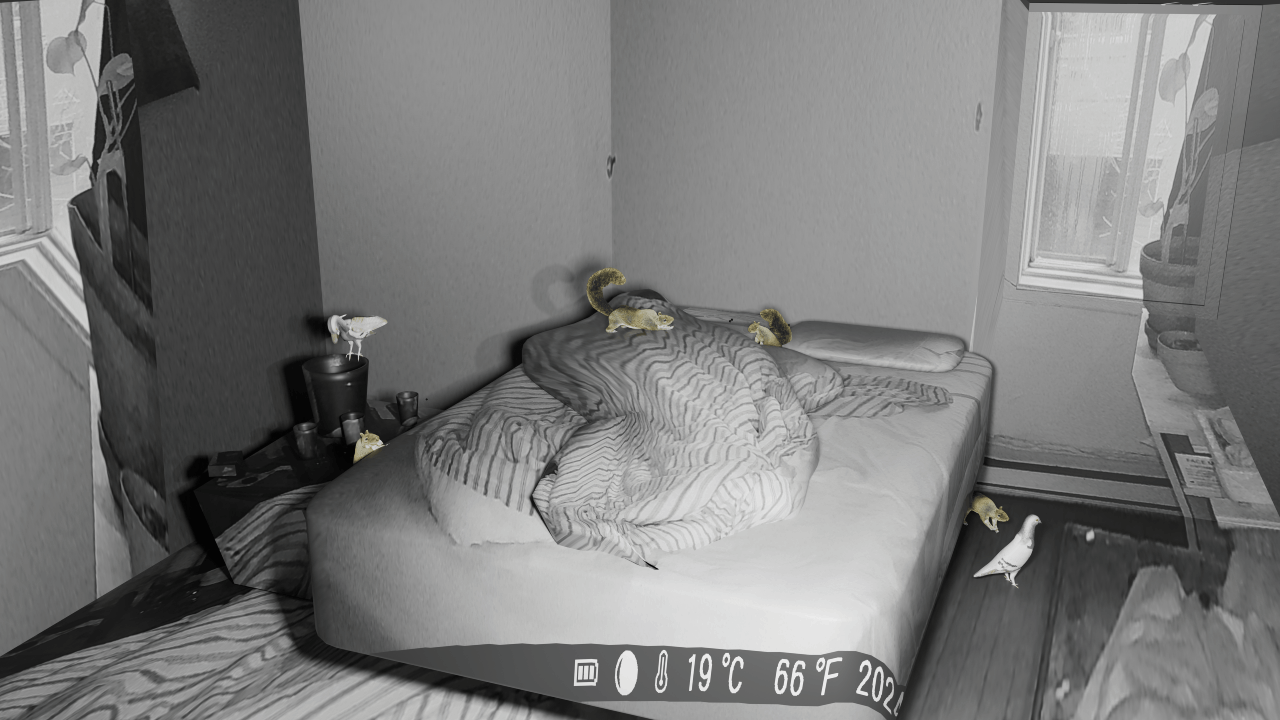

AgriSport is an interactive installation dealing with the invisible link between physical activity and agricultural production. AgriSport is a training room and a participatory game of agricultural production. Its aim is to showcase the daily effort that goes into our livelihoods. AgriSport is a fun way for the public to learn about activities that are rarely used in agricultural production. Participants in this installation are invited to work together to make a virtual farm prosper, or to watch it sink into debt. AgriSport is a game, an art work, a relational experience and an opportunity to get fit. The project is still being created.
AgriSport est une installation interactive qui traite du lien invisible entre l'activité physique et la production agricole. AgriSport est une salle d'entraînement et un jeu participatif de production agricole. Son objectif est de mettre en évidence les efforts quotidiens que nous déployons pour gagner notre vie. AgriSport est un moyen amusant pour le public de découvrir des activités qui sont rarement utilisées dans la production agricole. Les participants à cette installation sont invités à travailler ensemble pour faire prospérer une ferme virtuelle ou la voir s'endetter. AgriSport est à la fois un jeu, une œuvre d'art, une expérience relationnelle et une occasion de se mettre en forme. Le projet est en cours de création.
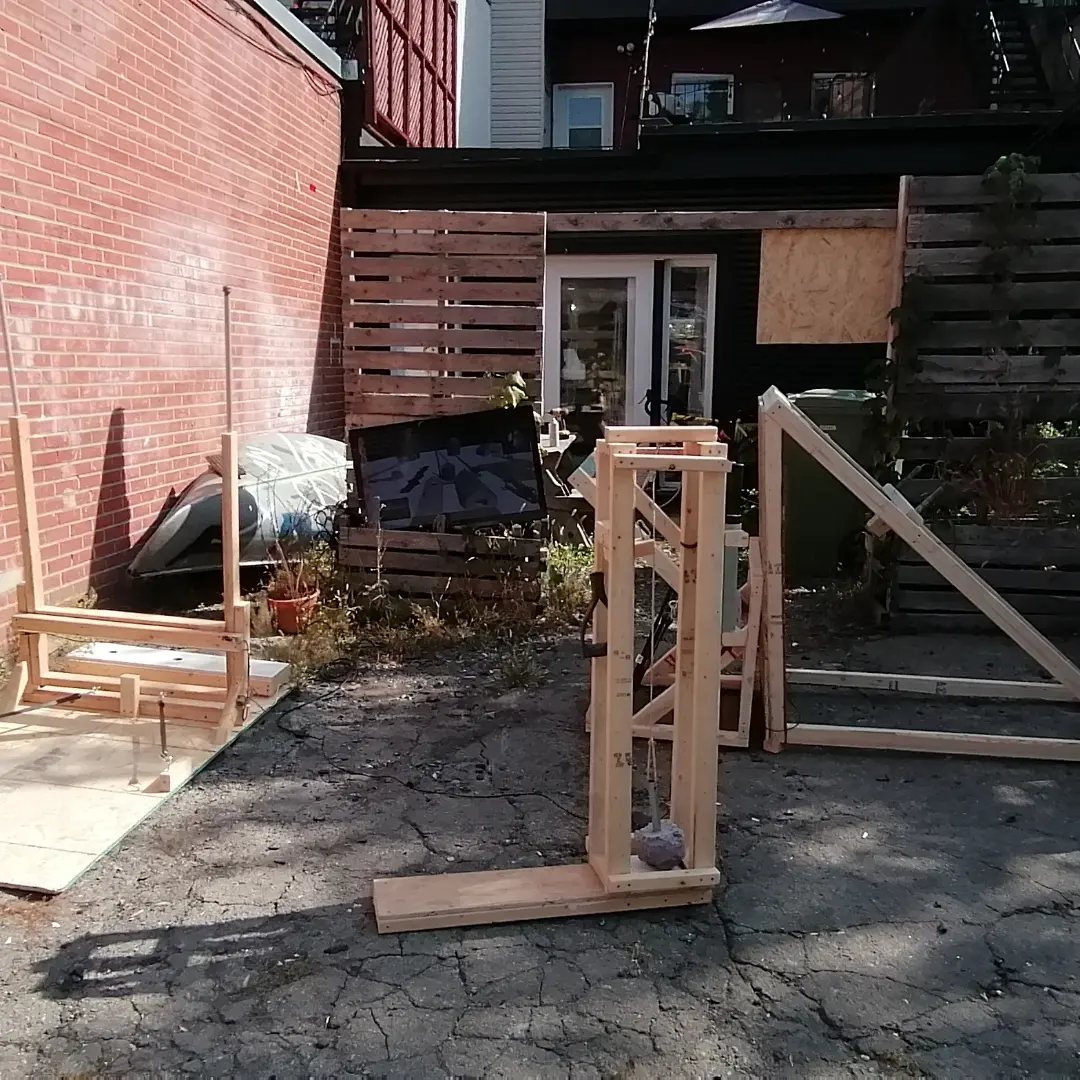
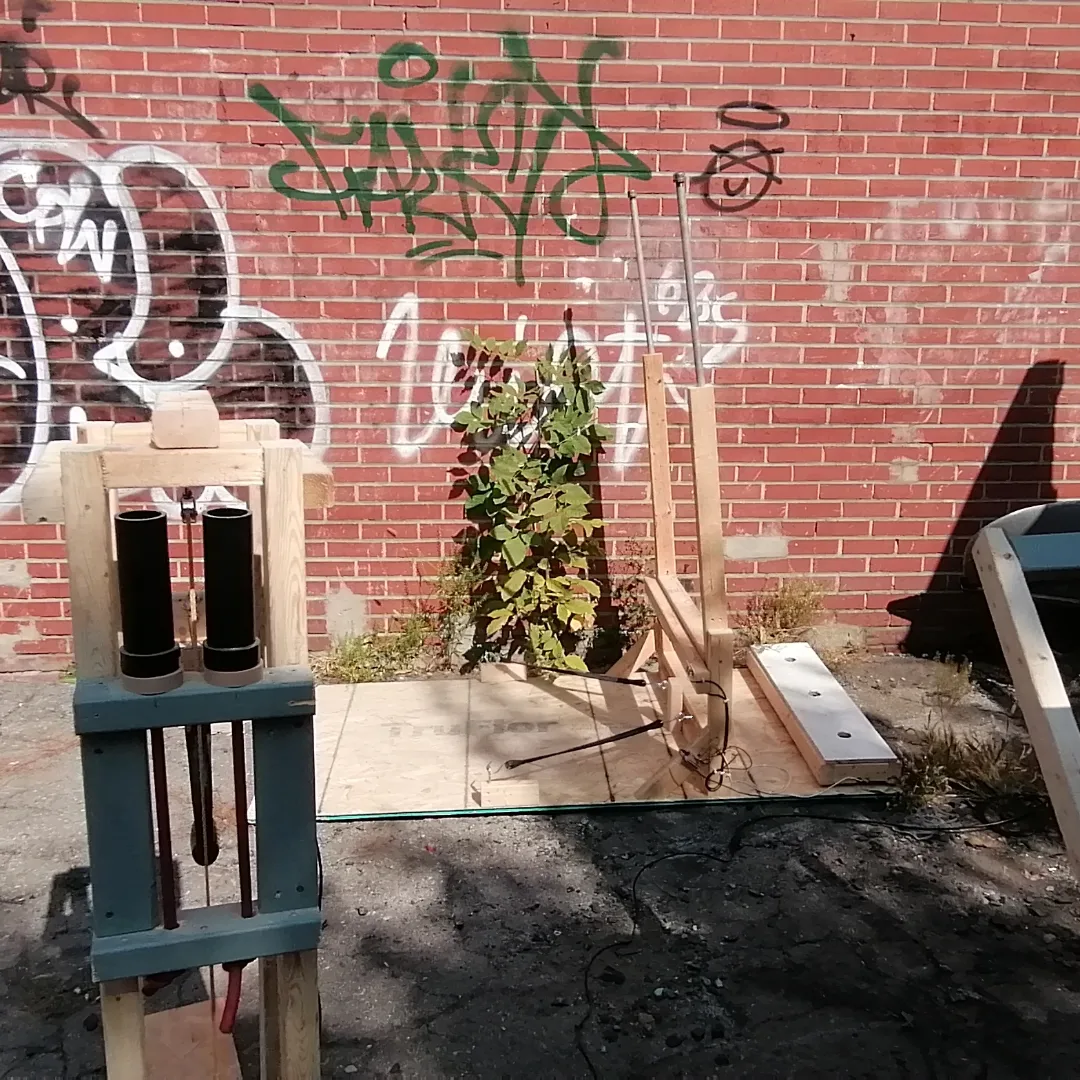
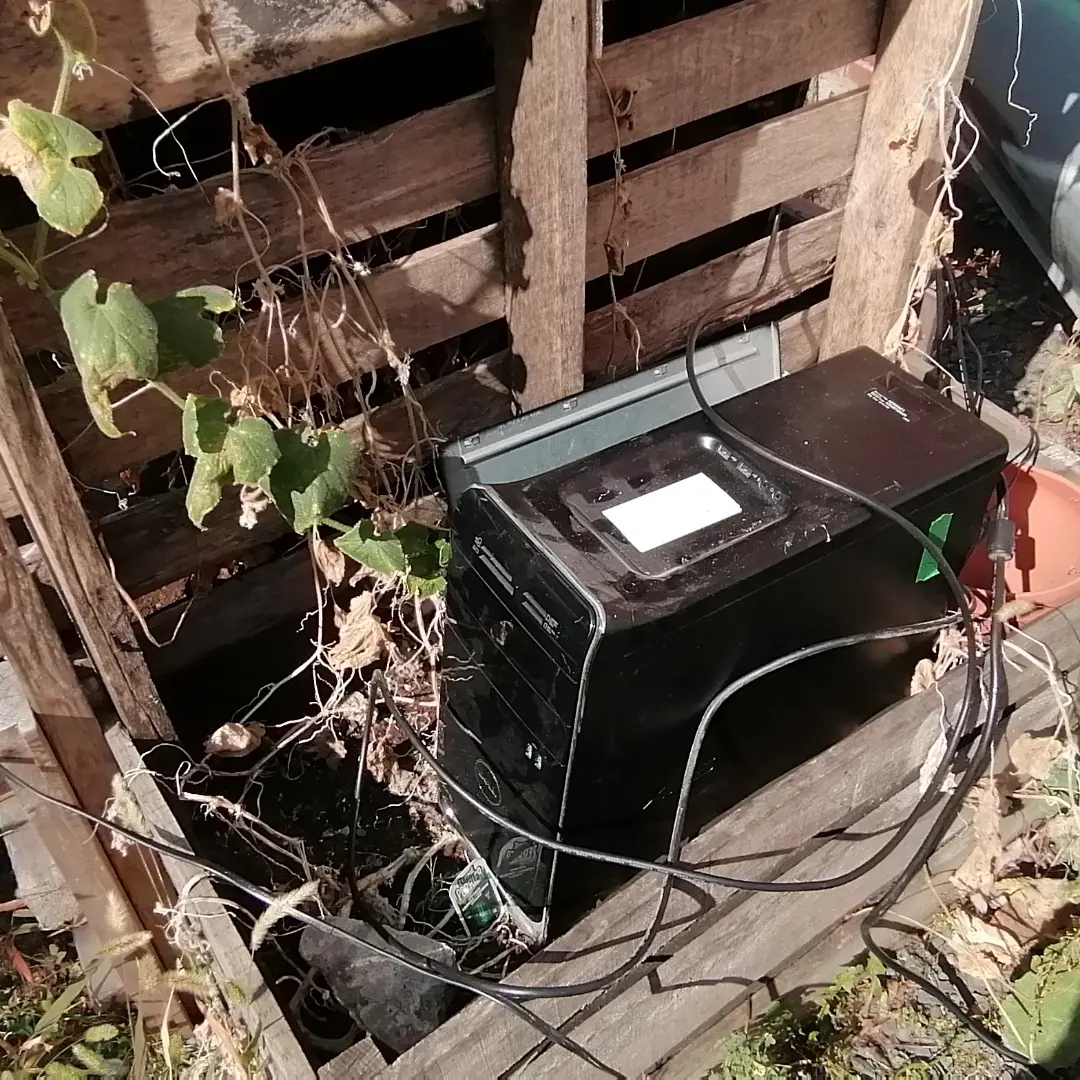
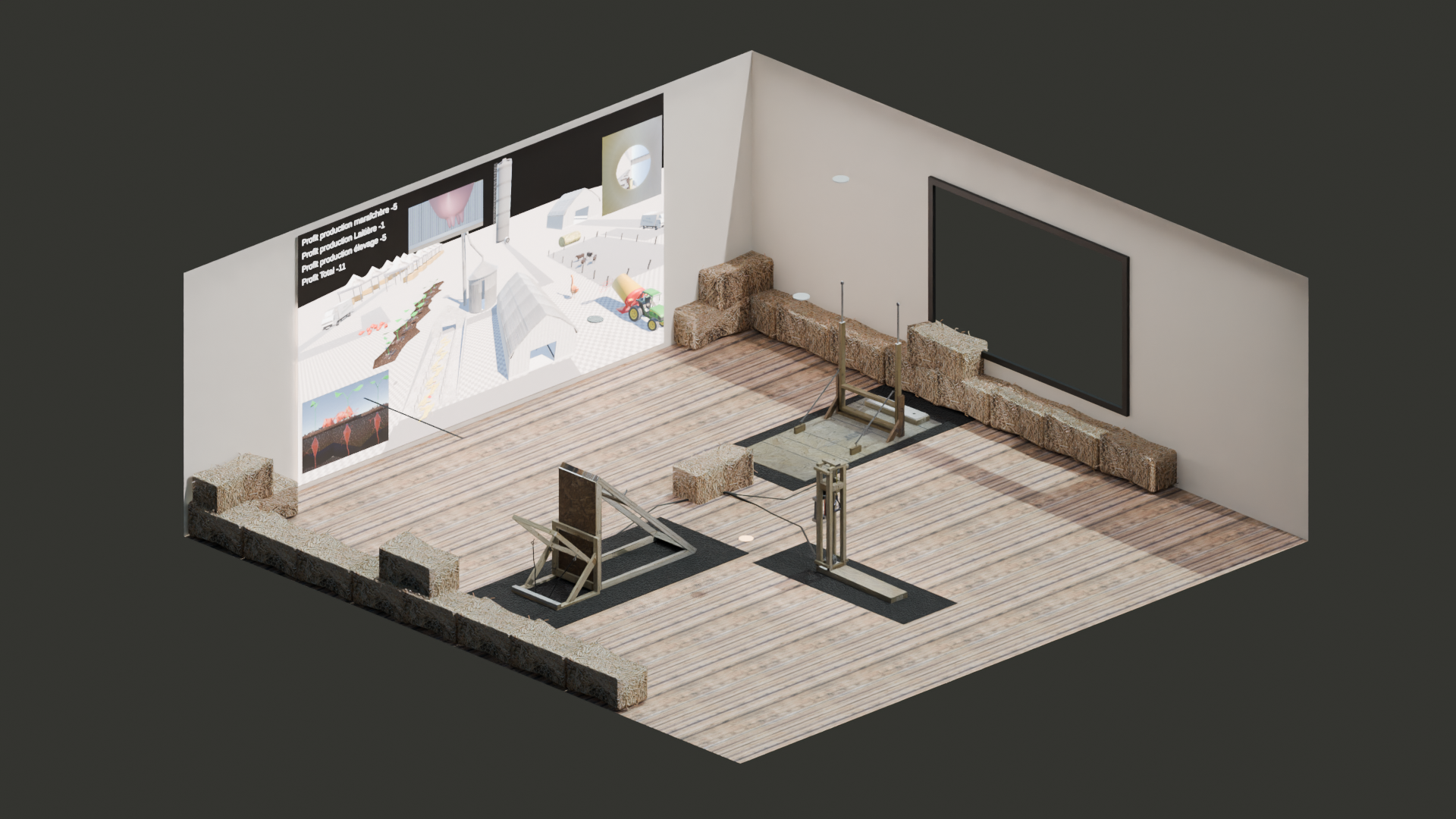

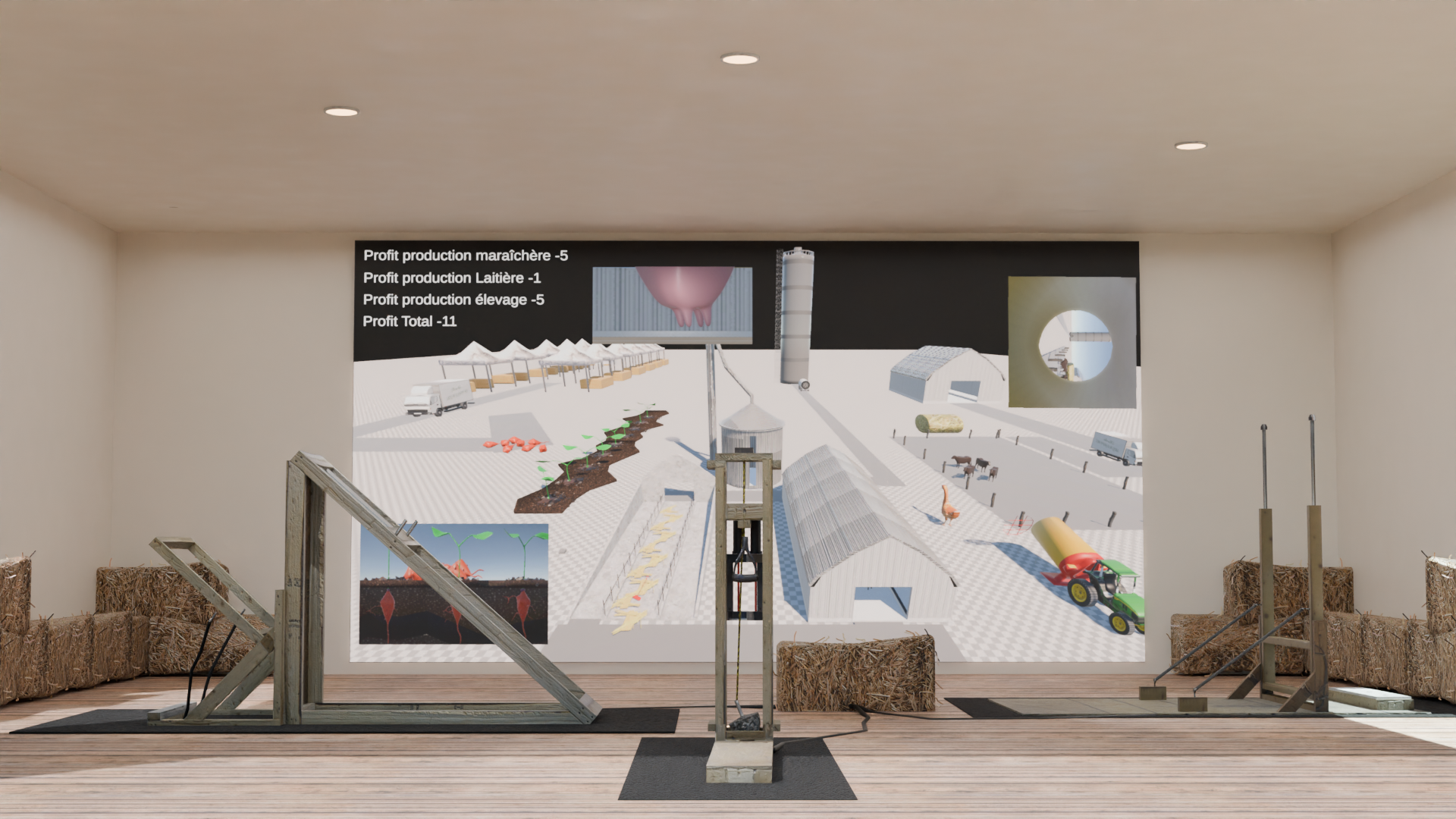
This project is an anthropomorphic satire on the use of Notepad software. This prototype, entirely made on an arduino, captures the distance of the guests from the screen. Depending on this distance, the microcontroller acts as a keyboard and sends a succession of letters and then erases them. On the screen is the Notepad software. This is where the characters appear. The sentences that can be read are a lament, probably from the software, about the lack of attention and use that people make of it.
Ce projet est une satire anthropomorphique de l'utilisation du logiciel Notepad. Ce prototype intéractif, entièrement réalisé sur un arduino, capte la distance des invités par rapport à l'écran. En fonction de cette distance, le microcontrôleur fait office de clavier et envoie une succession de lettres puis les efface. Sur l'écran se trouve le logiciel Notepad. C'est là qu'apparaissent les caractères. Les phrases que l'on peut lire sont une complainte, probablement du logiciel, sur le manque d'attention et d'utilisation que les gens en font.
Co-creation project with Mégane Voghell on mixing traditional painting techniques with 3D Uv mapping. This project is also interested in the exploration of non linear perspective inspired by medieval gothic paintings. It was financed by the grant a school hosts an artist or writer and overviewed by Turbine center. For 9 weeks the artists have created a simulation using 3D models, UV unwrapping and watercolors. This symbiotic work permited both of the participants to participate in each other expertises. During that time they also taught this techni to 40 students. The project wa exposed at Pierre-Laporte highschool, projet casa and foire papier.
Projet de co-création avec Mégane Voghell sur le mélange des techniques de peinture traditionnelles et de mappage UV 3D. Ce projet s'intéresse également à l'exploration de la perspective non linéaire inspirée par les peintures gothiques médiévales. Il a été financé par la subvention « Une école accueille un artiste ou un écrivain » et supervisé par le centre Turbine. Pendant 9 semaines, les artistes ont créé une simulation en utilisant des modèles 3D, du dépliage UV et des aquarelles. Ce travail symbiotique a permis aux deux participants de collaborer en partageant leurs expertises respectives. Durant cette période, ils ont également enseigné cette technique à 40 élèves. Le projet a été exposé à l'école secondaire Pierre-Laporte, au projet Casa et à la foire Papier.

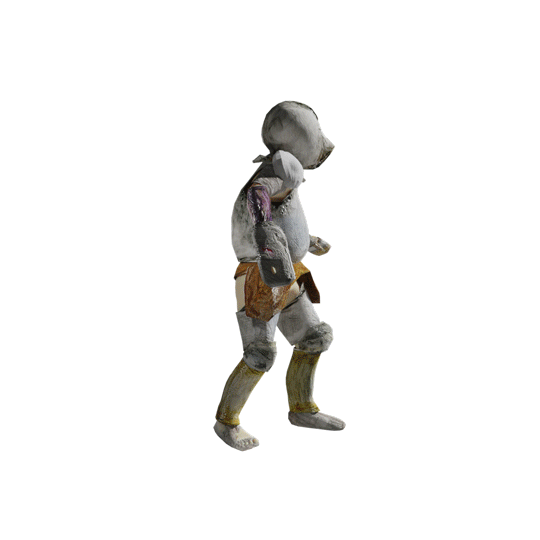

Reenactment of archives of artistic performance as Artists' Games 2021
Reenactment d’archives de la performance artistique comme Artists’ Games de Jules Deslandes du 5 au 14 août 2021, à perte de signal.
Cette exposition est le fruit d’un projet de recherche et création dans le cadre de la maîtrise en art concentration Design numérique à l’UQAC-NAD. Elle explore la remédiatisation d’archives de performances iconiques à travers des reenactments artistiques présentés sous forme d’Artists’ Game. Les Artists’ Games se définissent comme des œuvres utilisant les mêmes technologies de production que celles des jeux vidéo, générant une esthétique particulière à ceux-ci, tout en portant des concepts propres à l’art contemporain.
L’exposition regroupe plusieurs prototypes: une simulation numérique pseudo-aléatoire explorant une continuité fictive de l’oeuvre Le saut dans le vide (1960) d’Yves Klein; un reenactment numérique sous forme de jeu de tir utilisant le concept de permadeath basé sur l’oeuvre Shoot (1971) de Chris Burden; une simulation interactive de Plank Pieces 1 & 2 (1973) de Charles Ray utilisant les concepts de composition numérique gestuelle et de jeux vidéo comme maison de poupée; un jeu de tir de création exploitant le concept d’infinitude que l’on retrouve dans l’oeuvre basée sur les Tirs (1961- 1970) de Niki de Saint-Phalle; et finalement, un mashup de Legible City (1989) de Jeffrey Shaw avec la performance The Lovers (1988) de Marina Abramovic et Ulay.
Reenactment of archives of artistic performance as Artists' Games August 5 to 14, 2021, at perte de signal.
The works in this exhibition reflects a culmination of research and creation as part of a master's degree at UQAC-NAD in digital design. This project explores the remediation of archives of performance art by artistic reenactment through Artists’ Game. The concept of artists’ games stipulate a thick aesthetic of both video game and contemporary art. These studies are demonstrated through the creation and prototyping of different artists' games by remixing notorious performance art archives.
Prototypes in this exhibition consists of : a pseudo-random simulation of Leap Into the void (Yves Klein, 1960); a digital reenactment using the concept of permadeath based on the archives of Shoot (Chris Burden, 1971); an interactive simulation using the concepts of video games as doll house and hand-tracking based on Plank Pieces 1 & 2 (Charles Ray, 1973); a shooting game questioning the finite state of a creation based on Niki de Saint-Phalle Tirs (1961- 1970); and a mashup of Legible City (1989, Jeffrey Shaw) and The Lovers (1988, Marina Abramovic and Ulay).
pris de : https://us7.campaign-archive.com/?u=c78b2eec1222c4672ebd15158&id=5cc3720529
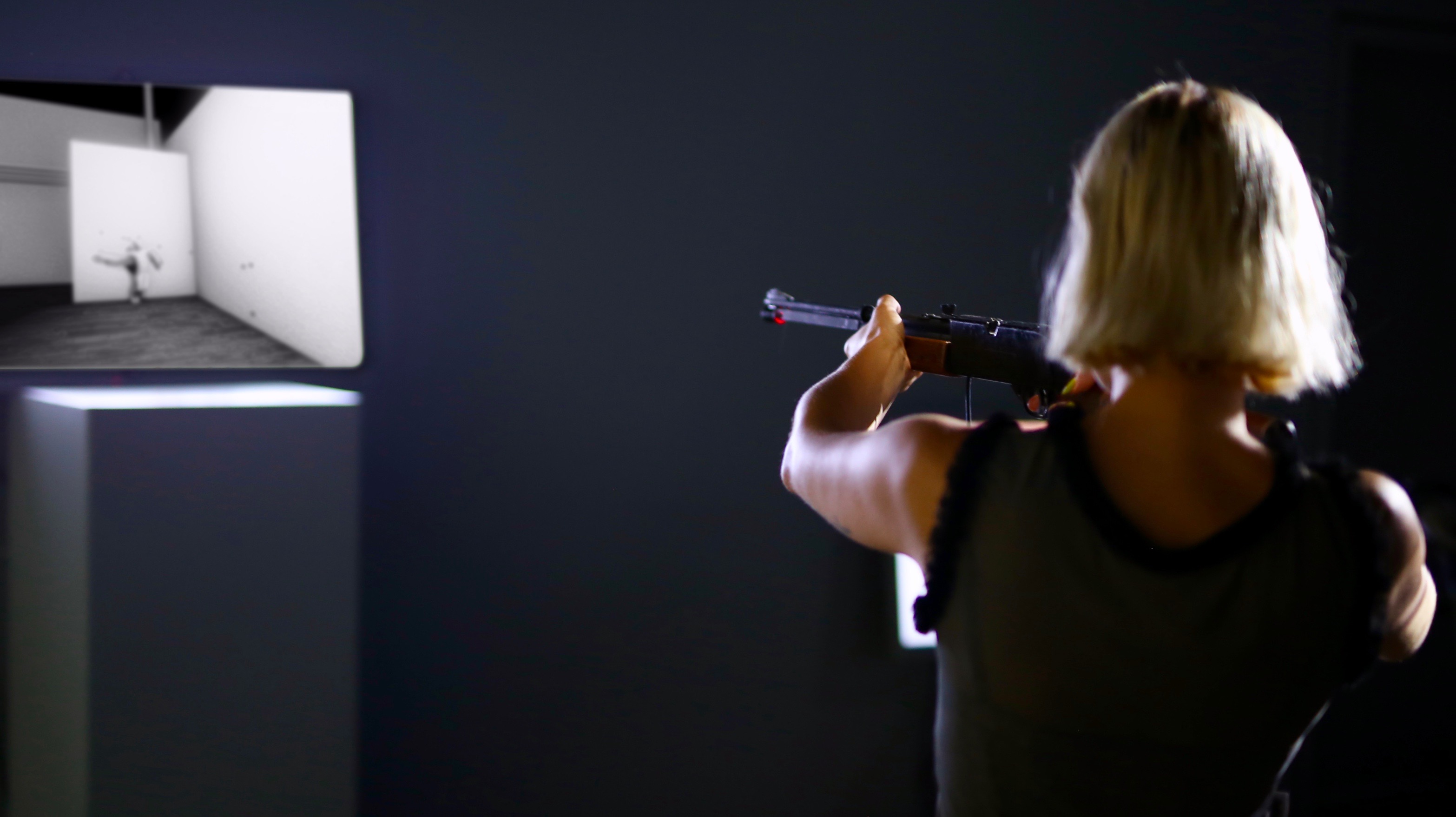
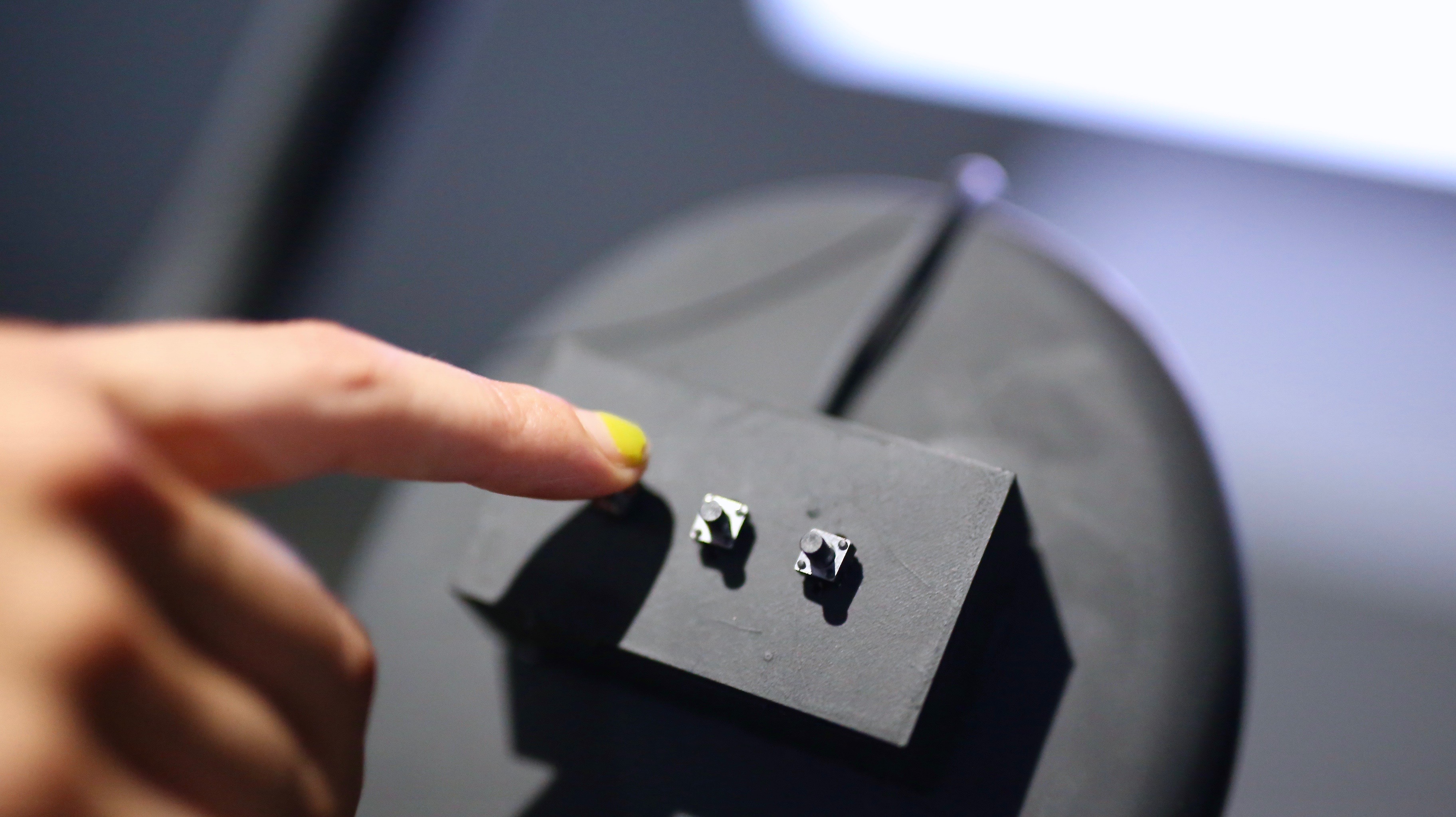
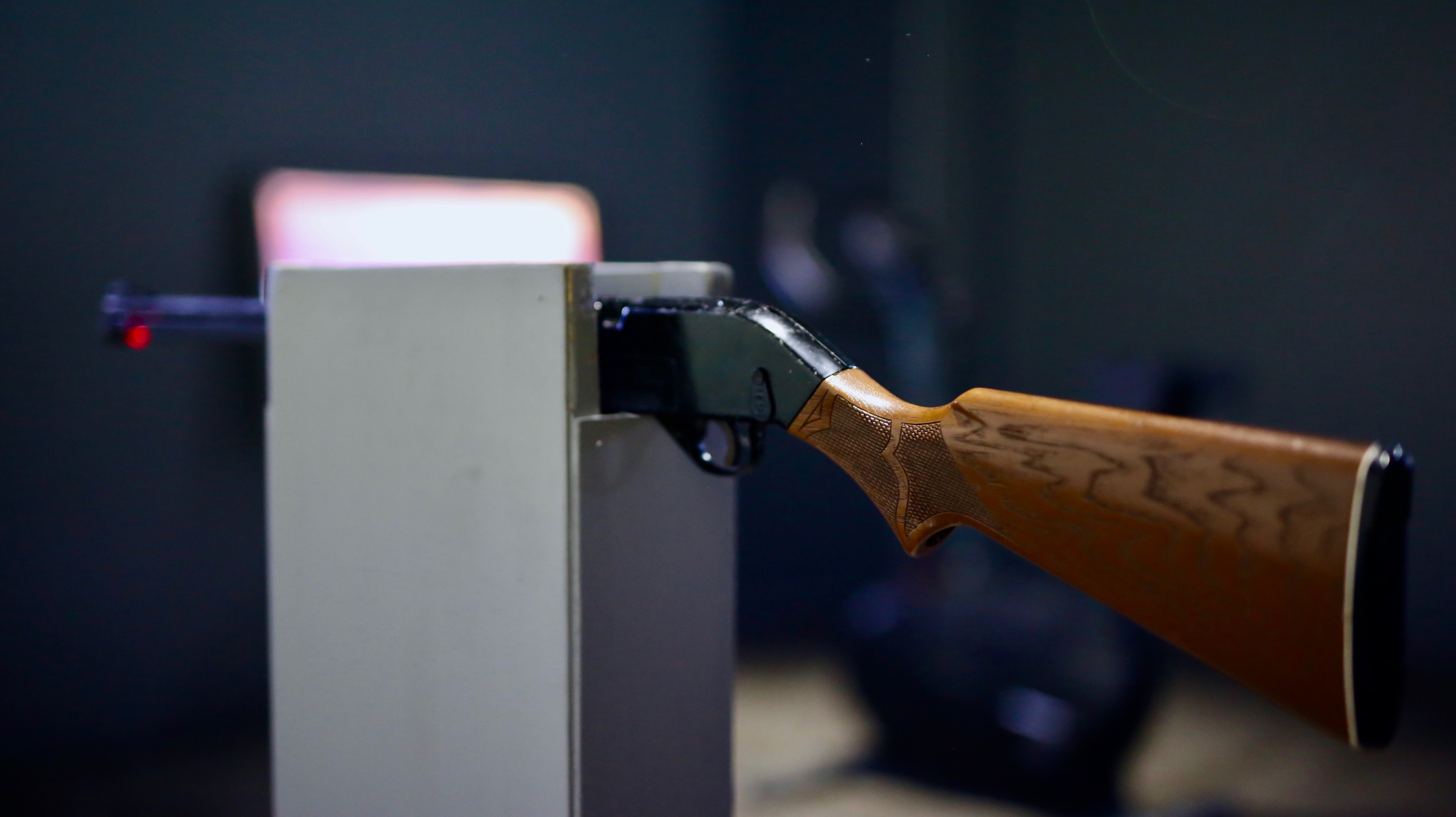
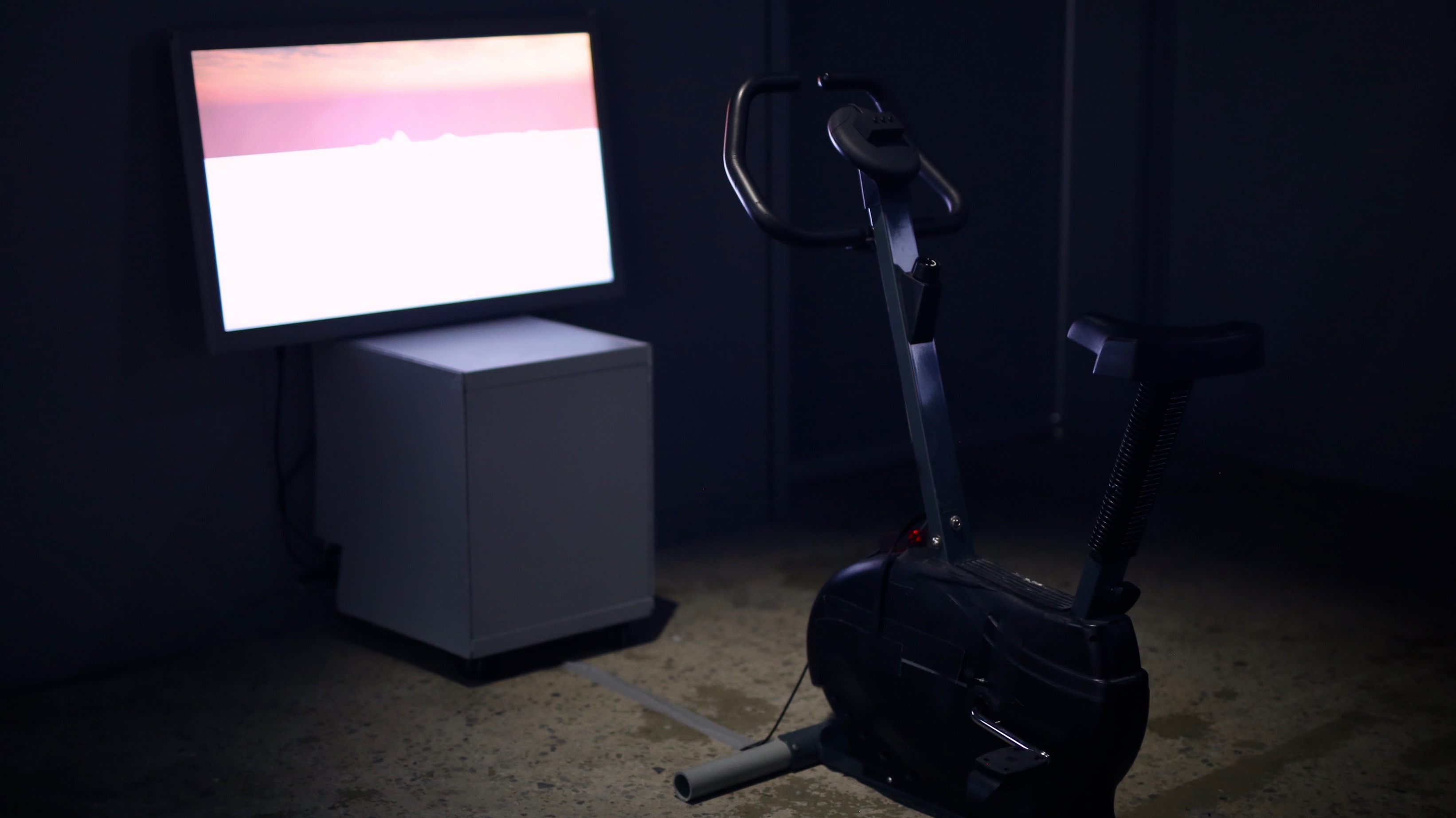
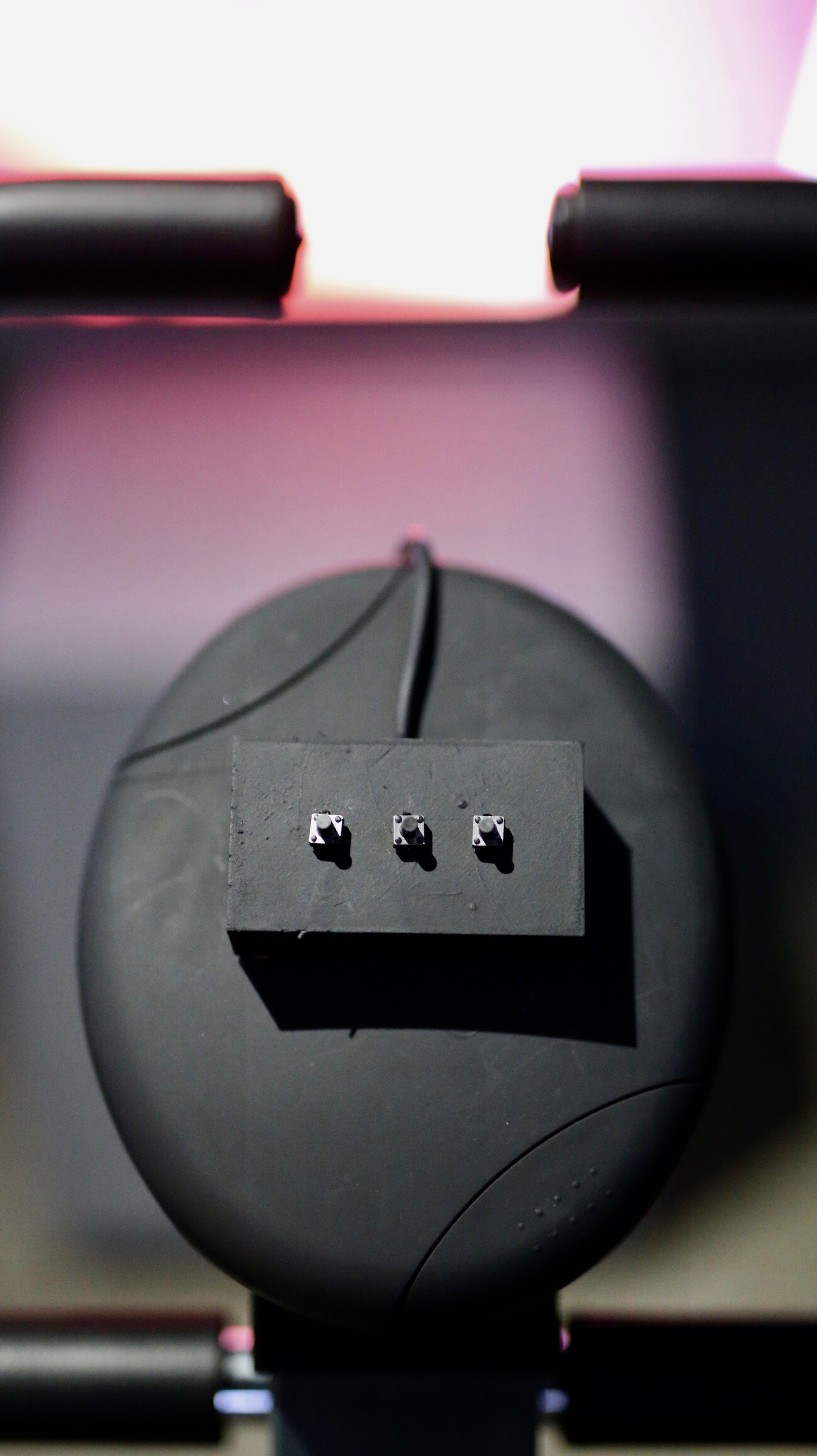
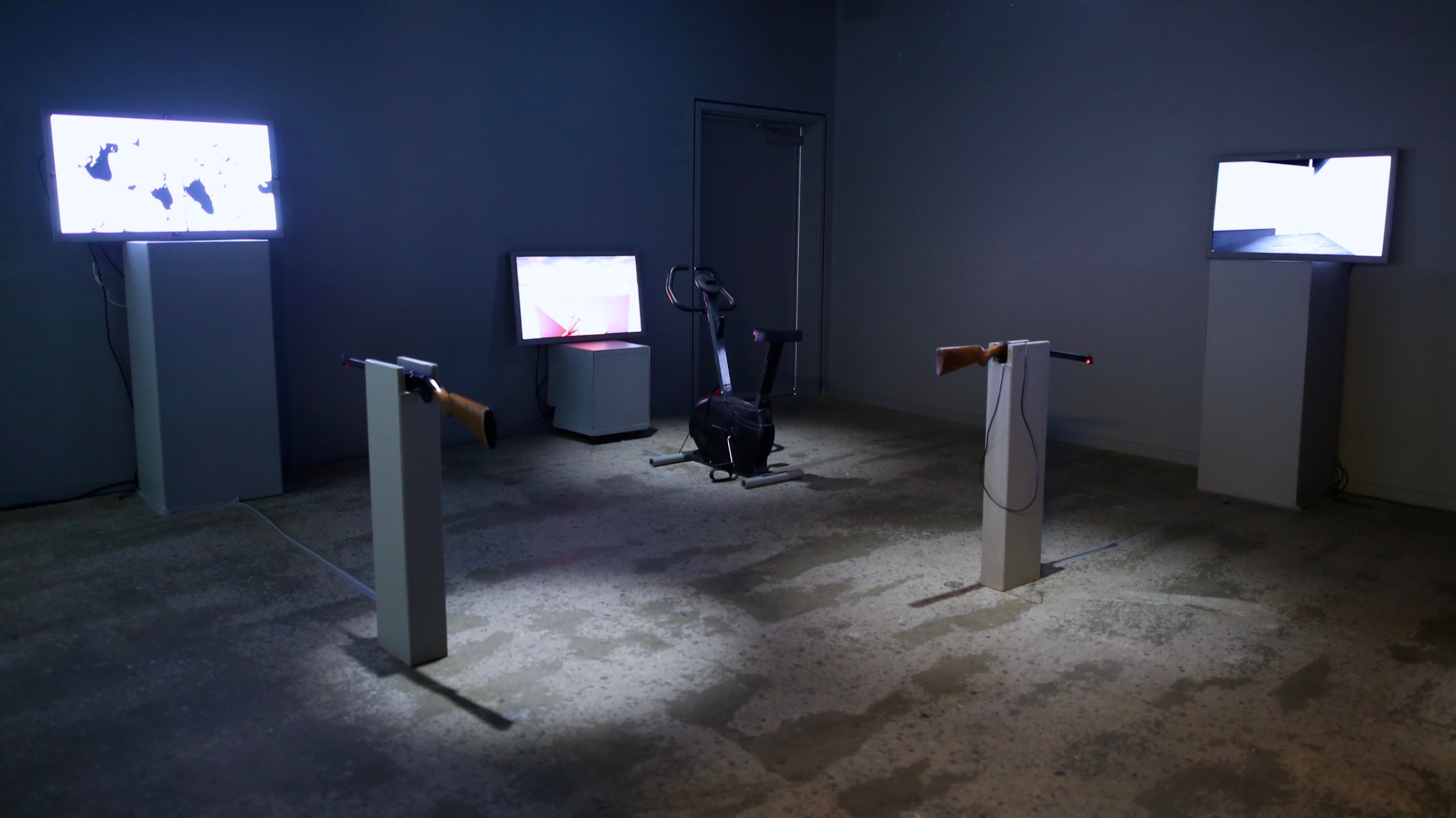
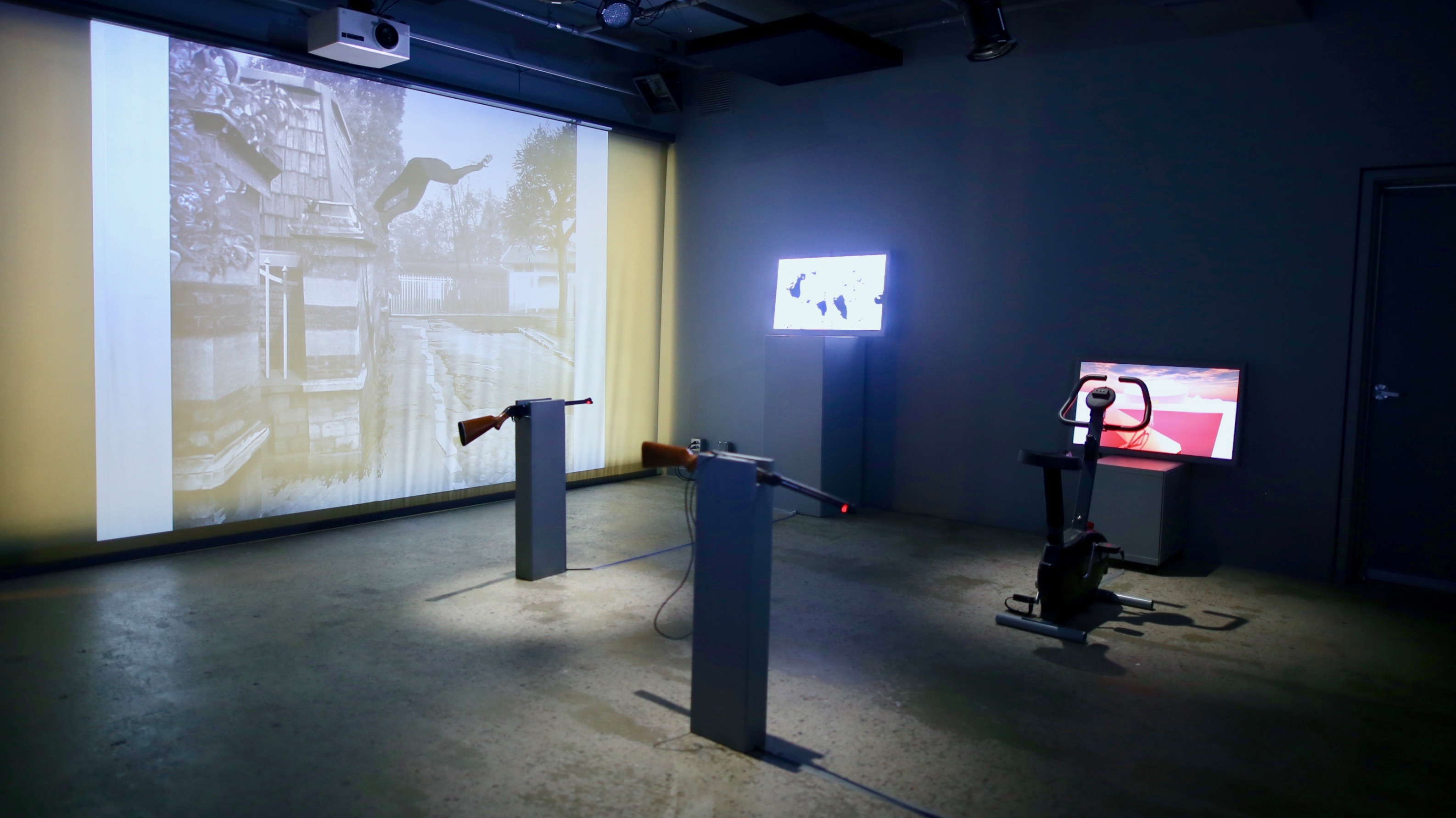
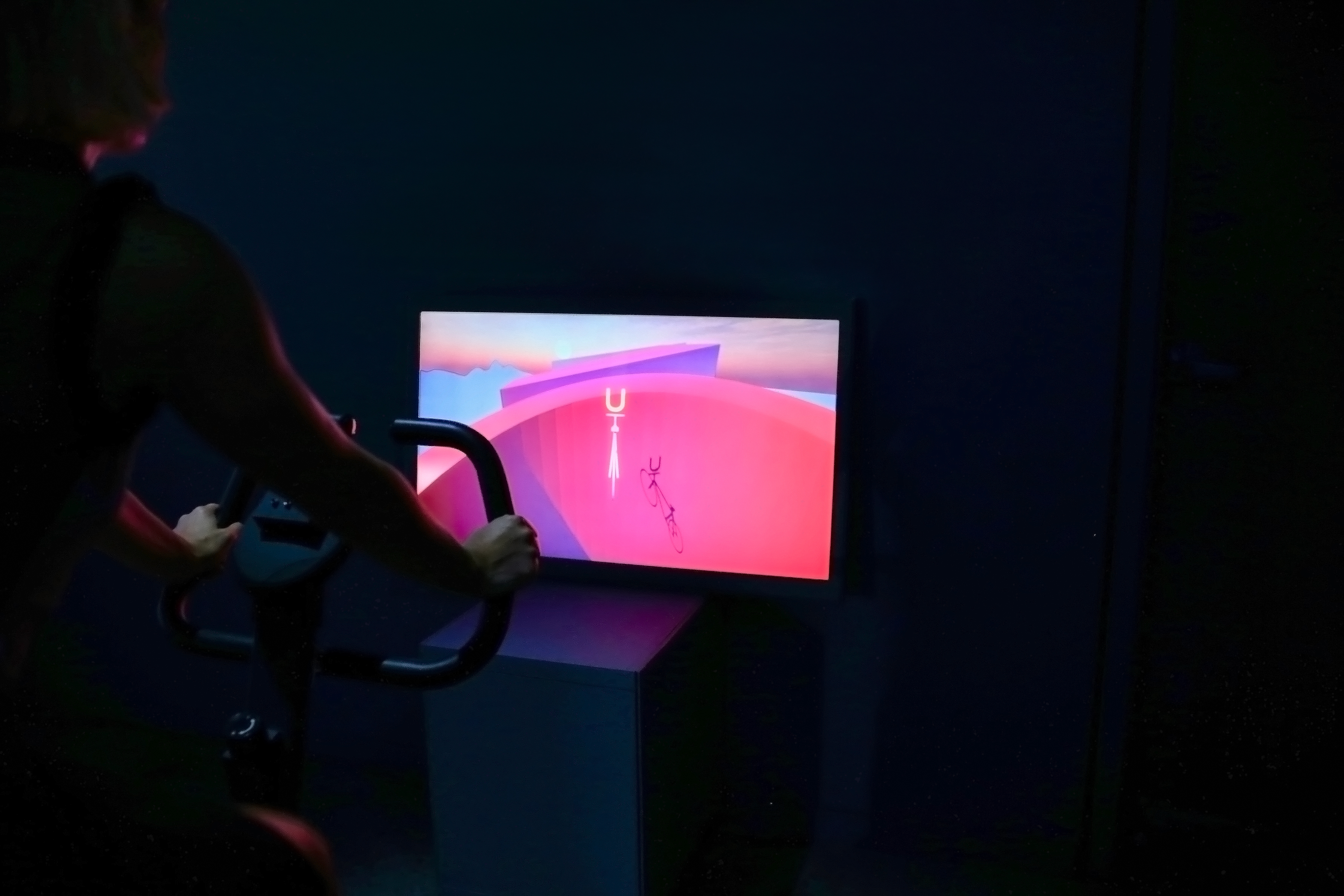
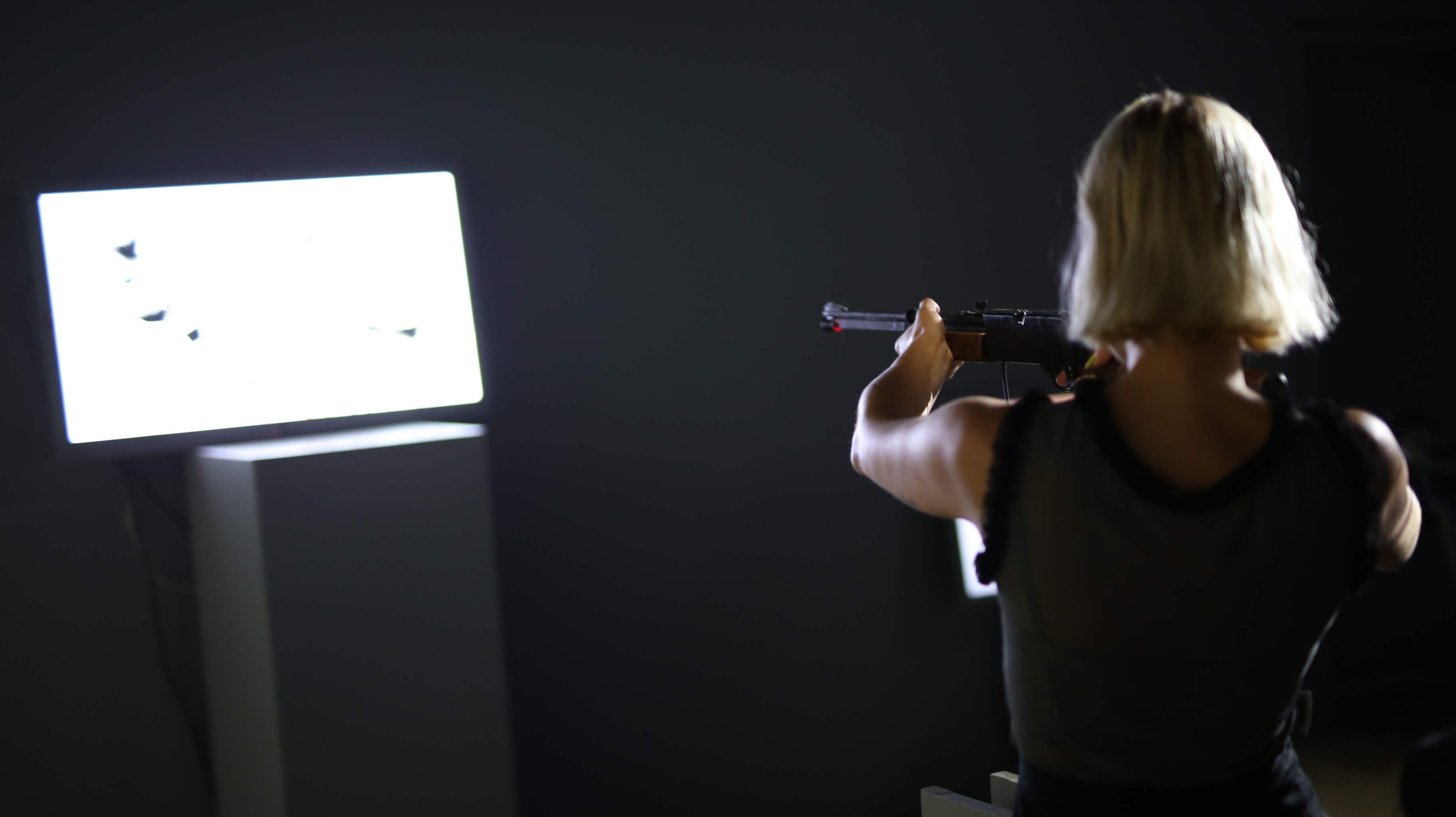
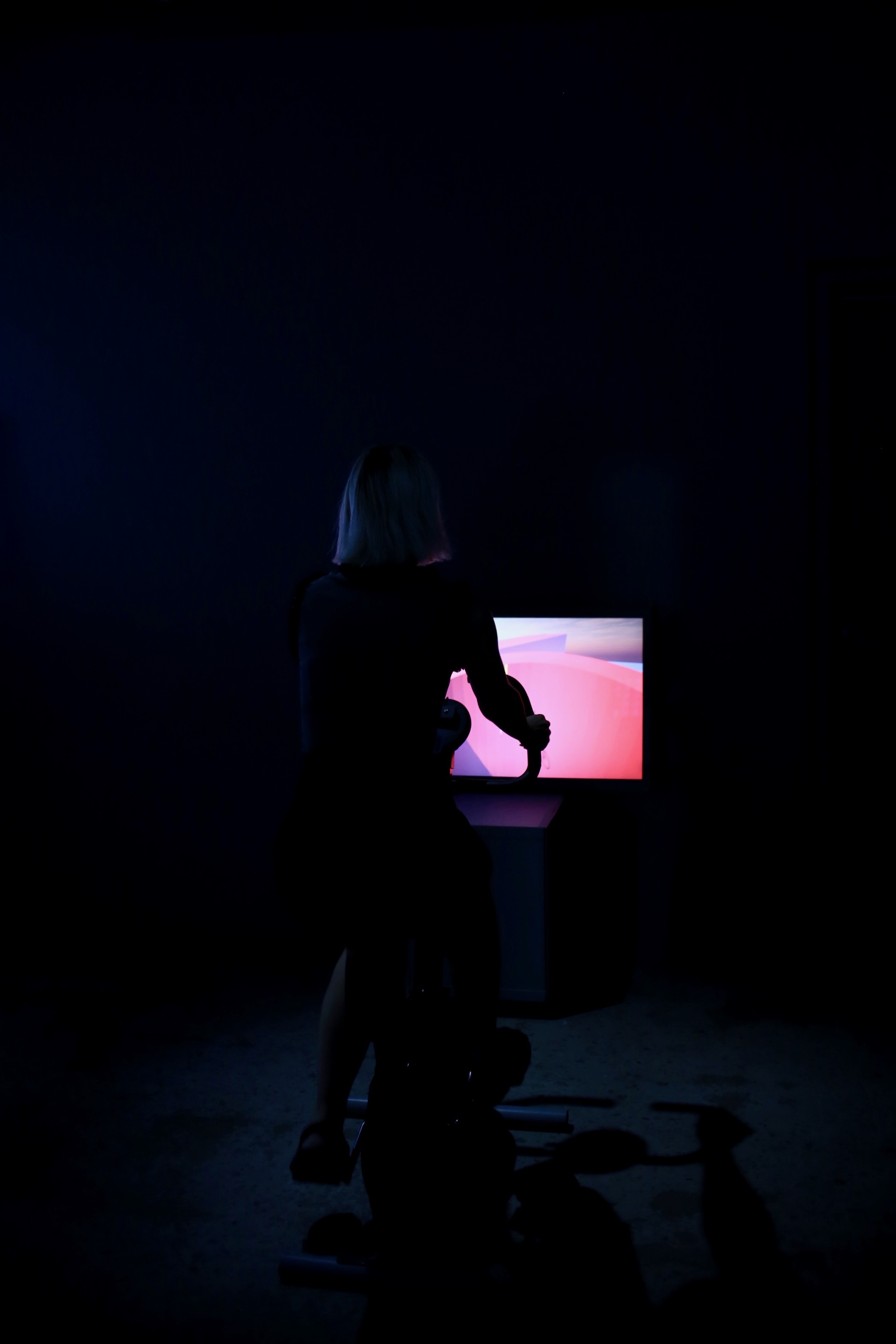

Gif par Camille Montuelle